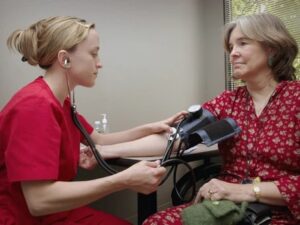Keeping track of your health is easier than ever with home medical devices. One important aspect of your health you can keep an eye on is your blood pressure. Accurate blood pressure monitoring at home can help you manage hypertension, understand your health better, and provide your doctor with valuable information. Here’s a step-by-step guide on how to do it right.
Step 1: Selecting the Right Blood Pressure Monitoring Device
First, you need to choose the correct blood pressure monitoring tool. Automatic, digital monitors are recommended for most people as they are simple to use and offer an accurate reading. Some digital monitors can be wrapped around your wrist or upper arm. Models with upper arm cuffs are generally the most accurate.
Once you’ve selected your device, it’s important to position yourself correctly for an accurate reading. Sit upright in a comfortable chair with your feet flat on the floor. Your back should be supported and legs uncrossed. The arm used to take the measurement should be relaxed and supported at heart level with the palm of your hand facing upward.
Wait for at least 5 minutes in this rested position before starting the blood pressure monitoring process. Make sure the cuff fits comfortably on your upper arm – it should be snug, but not too tight. Follow the instructions on your device and avoid talking or moving while the device takes a reading.
Step 4: Understanding your Blood Pressure Monitoring Results
A blood pressure reading consists of two numbers: the systolic pressure (top number) measures the force of blood against your artery walls during a heartbeat while the diastolic pressure (bottom number) represents this force between beats. A reading below 120/80 mmHg is considered normal according to the American Heart Association.
Step 5: Keeping a Record
Consistent blood pressure monitoring will provide the most accurate picture of your heart health over time. It’s important to keep a record of your readings to discuss with your healthcare provider. Many digital monitors can store readings for you, but a written log can also help track overall trends and reactions to certain foods or activities.
-
Avoid Factors that Contribute to Inaccurate Readings: Refrain from smoking, consuming caffeine or alcohol, and avoid exercising for at least 30 minutes before measurement. These activities can cause blood pressure to spike, resulting in inaccurate readings.
-
Consistency is Key: Try to take your readings at the same time each day for consistency. The best times are typically in the morning before taking medication (if applicable) and in the evening before dinner.
-
Proper Cuff Size: Ensure your blood pressure monitor cuff size is right for your arm. Cuffs that are too small or large can provide inaccurate readings.
Blood pressure monitoring at home can be an essential part of managing your health. But remember, while these home readings are helpful, they are not a substitute for regular check-ups with your healthcare provider. Therefore, ensure you collaborate closely with your healthcare team and keep them updated on your blood pressure trends.

